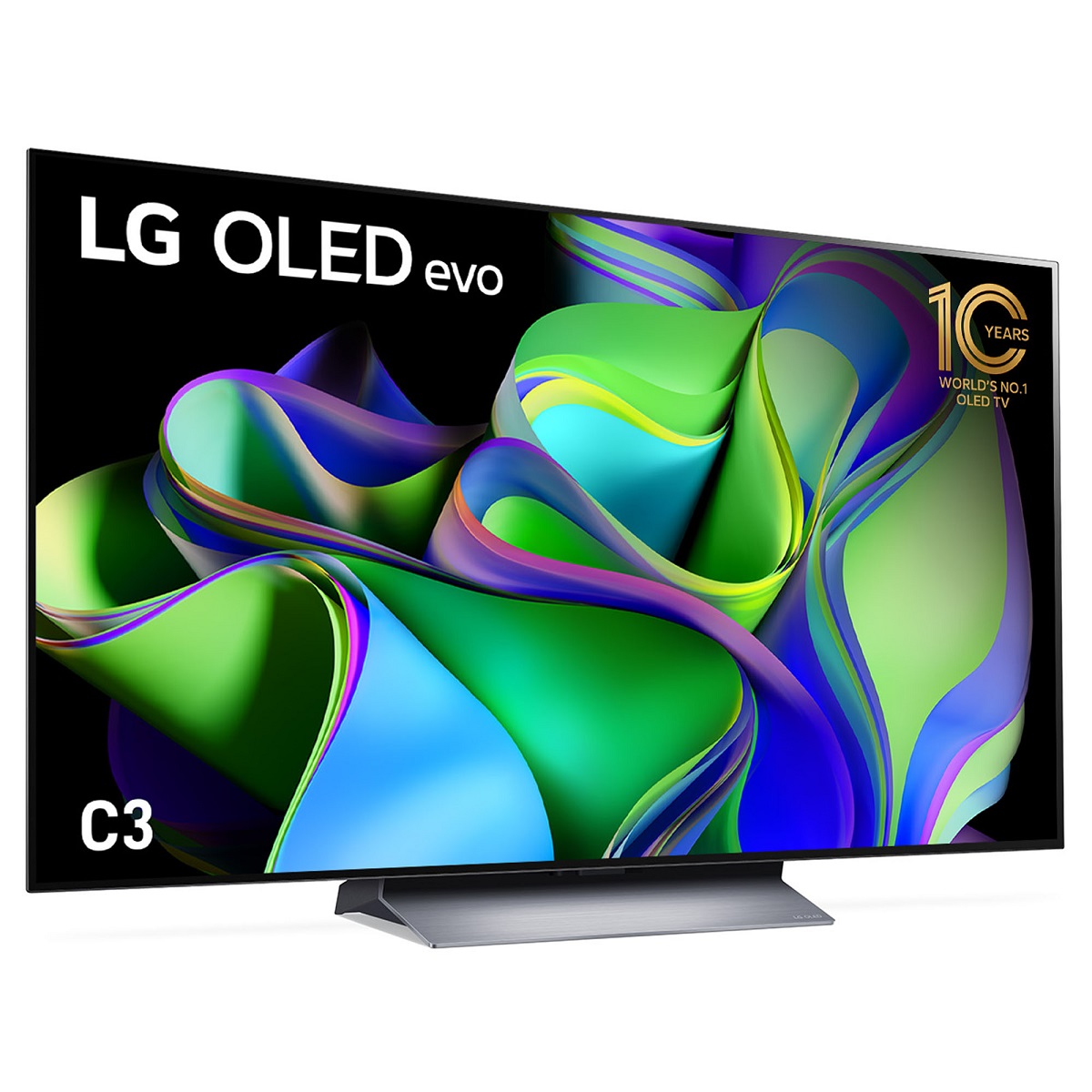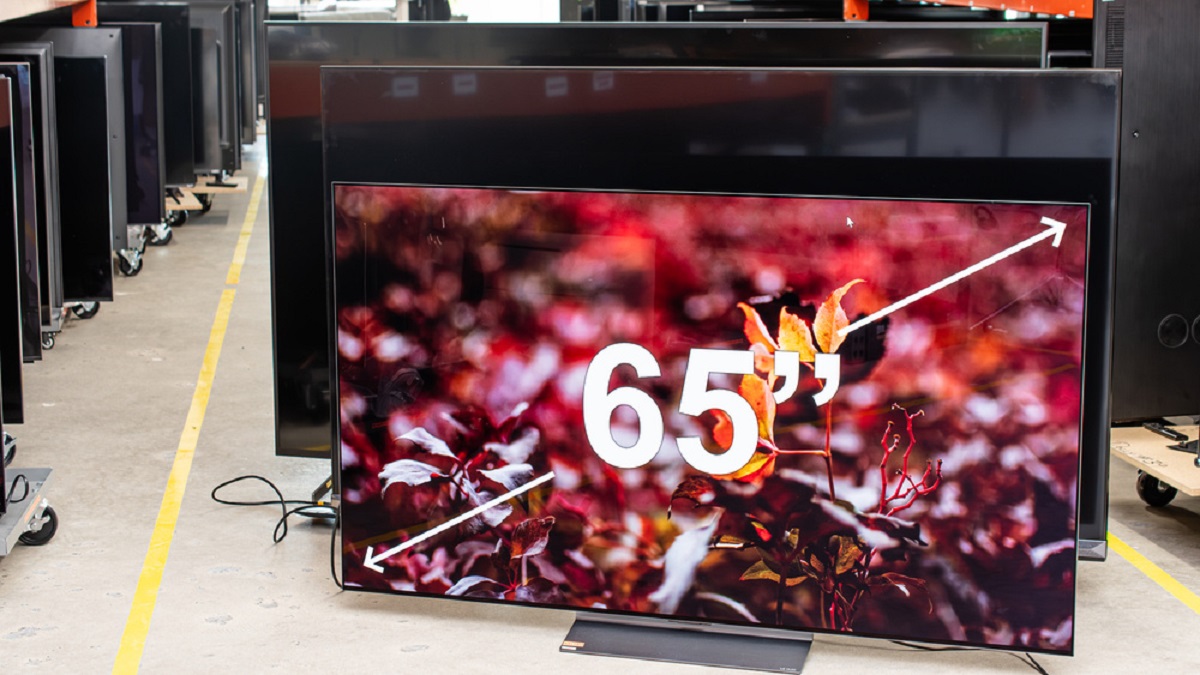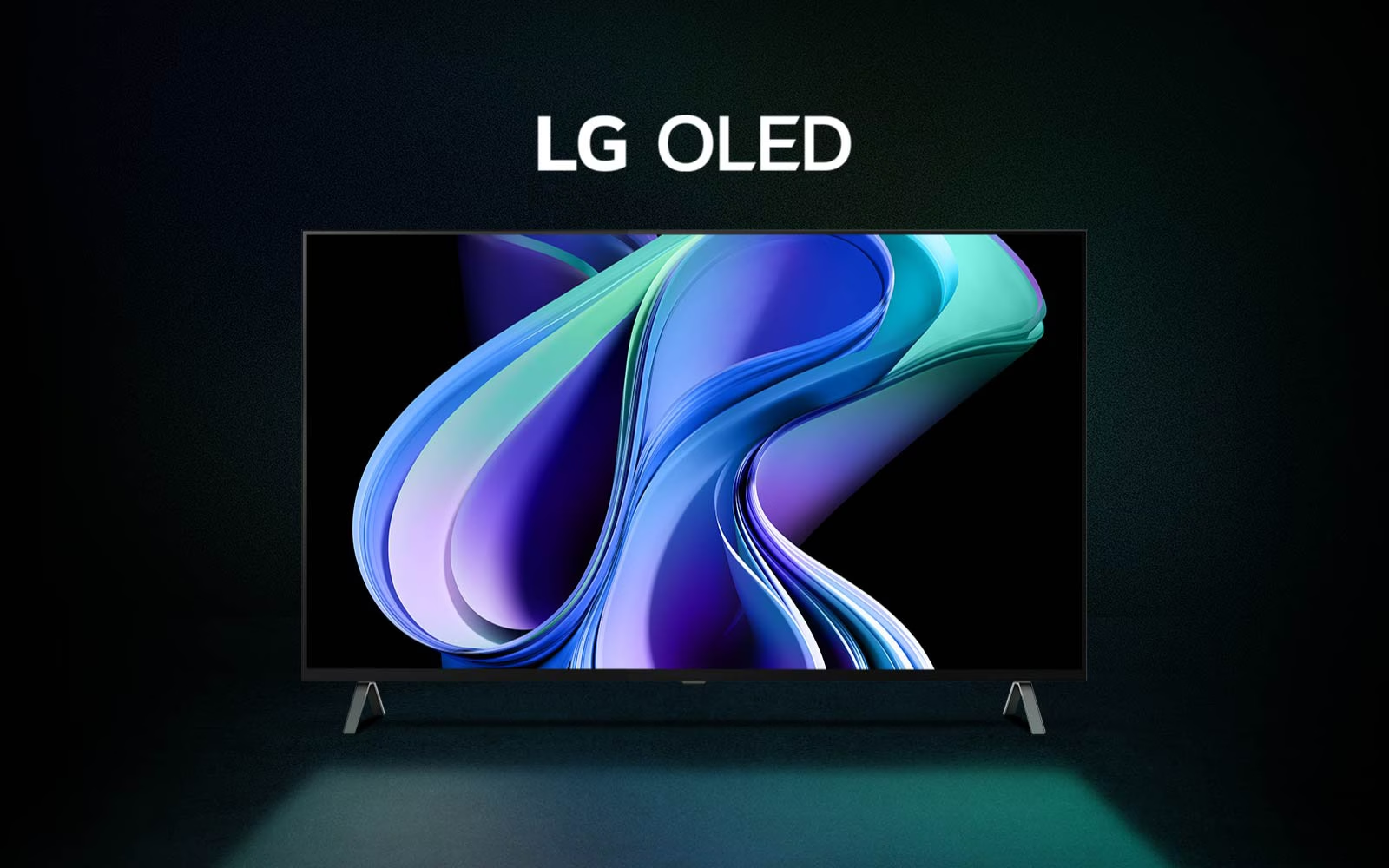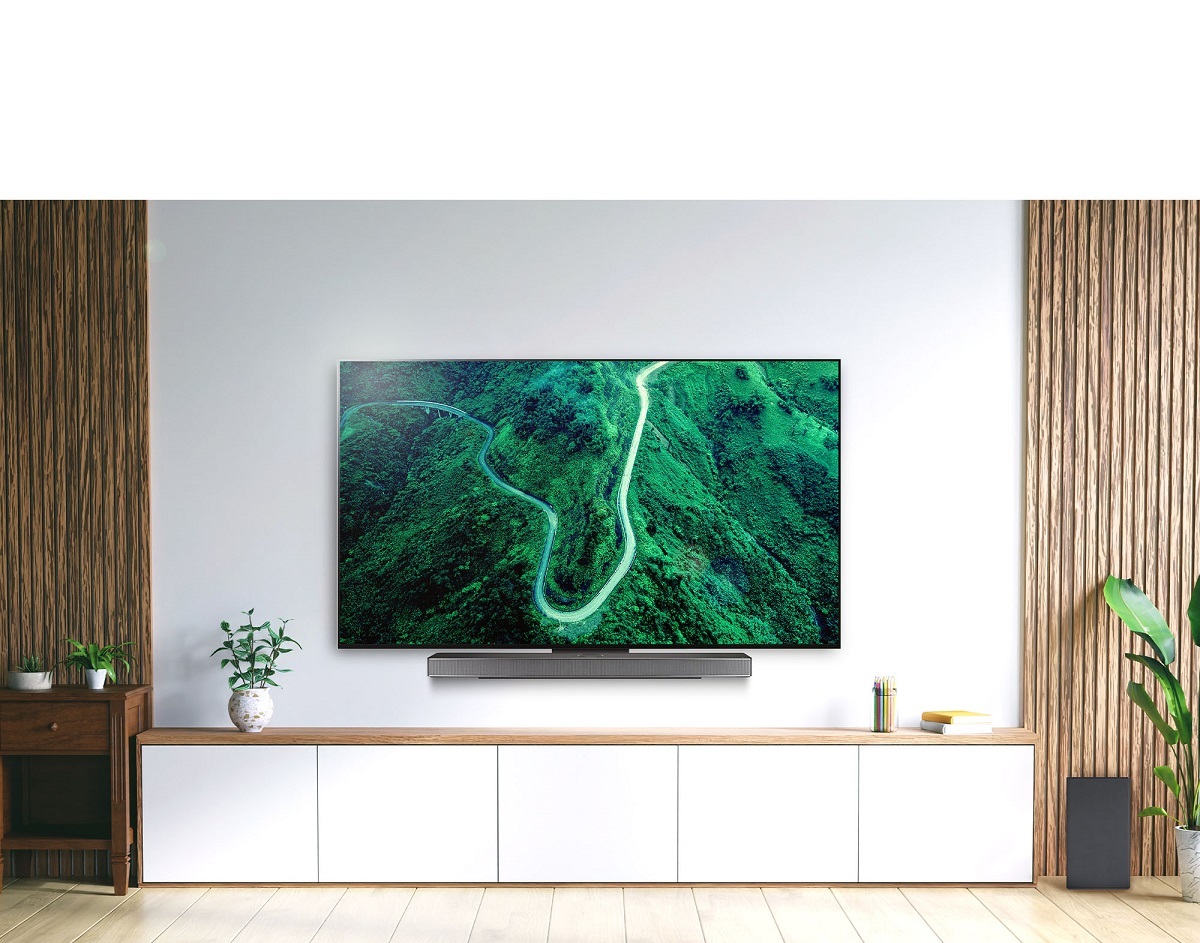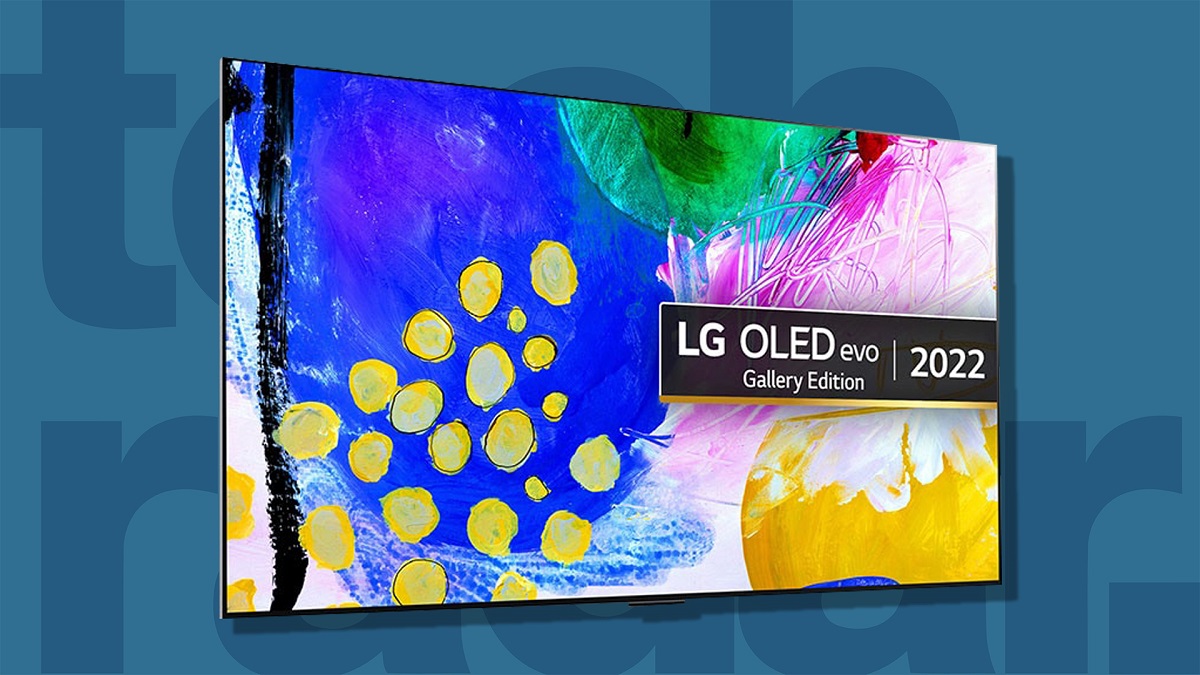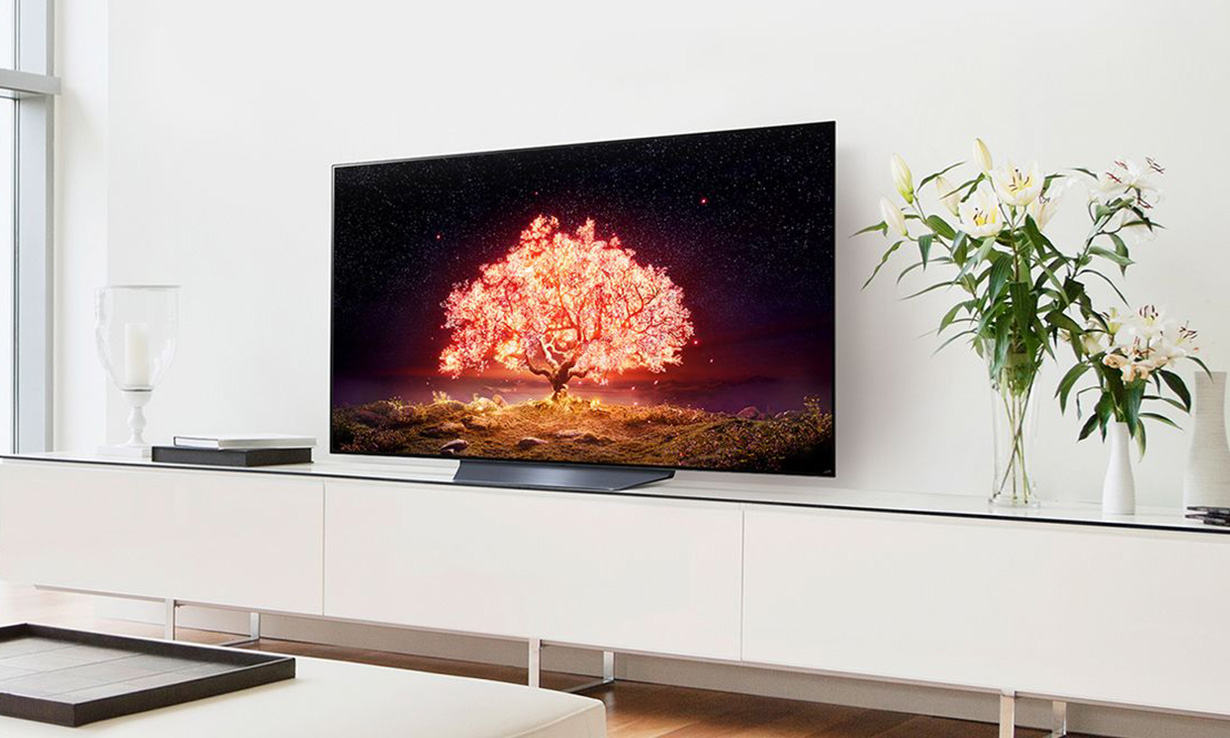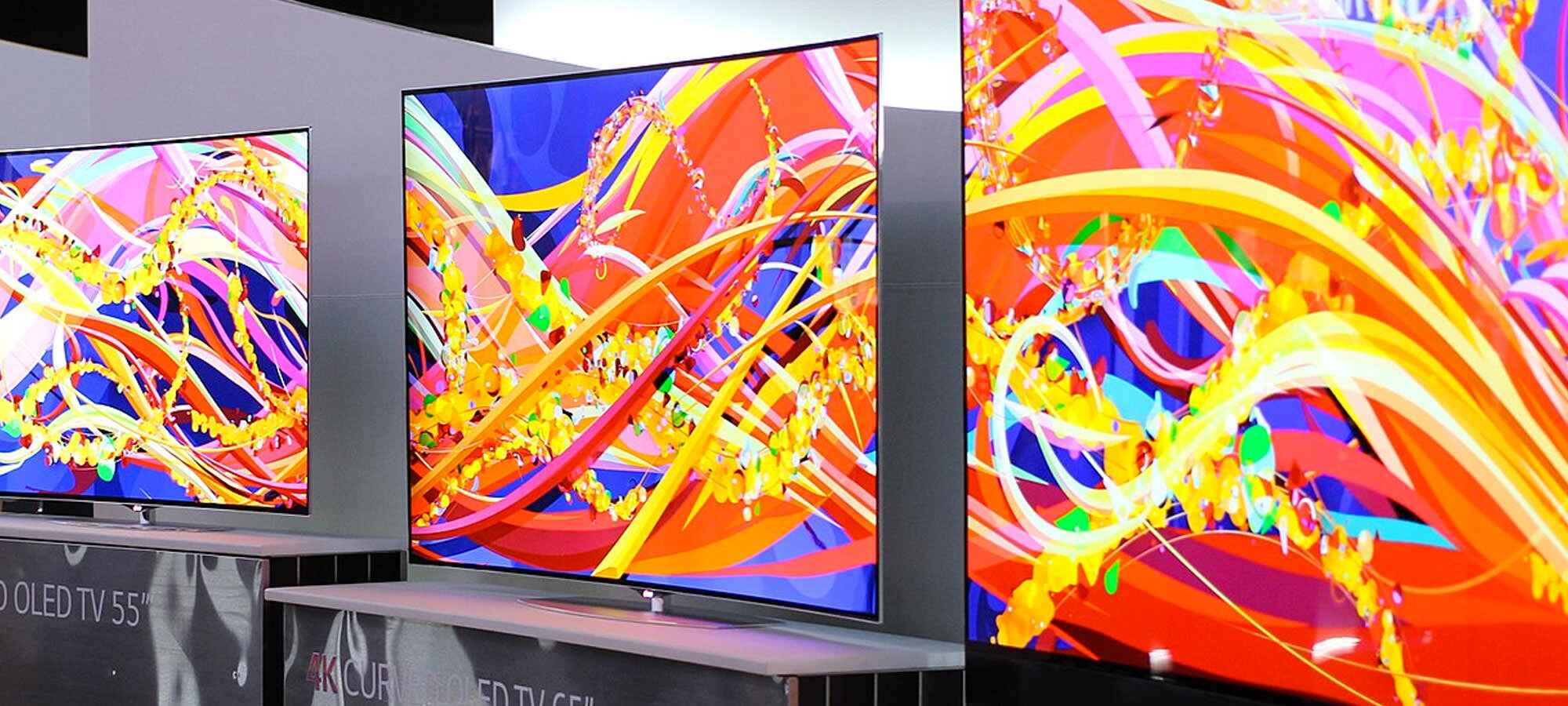Introduction
When it comes to choosing a new TV, there are many specifications to consider. One of the key factors that significantly impacts the viewing experience is the refresh rate. But what exactly is the refresh rate of a TV, especially when it comes to OLED TVs? In this article, we will delve into the fascinating world of refresh rates and explore their significance in the realm of OLED technology.
The refresh rate refers to the number of times per second that an image on the screen is refreshed. It is measured in Hertz (Hz). Essentially, a higher refresh rate means that the TV can display images more frequently, resulting in smoother and more fluid motion.
While the refresh rate is important for all types of TVs, it holds particular significance for OLED TVs. OLED, or Organic Light-Emitting Diode, is a cutting-edge display technology known for its superior picture quality and exceptional color accuracy. The individual pixels in an OLED display emit their own light, which enables infinite contrast ratios and stunning black levels.
So, why is the refresh rate crucial for OLED TVs? The answer lies in the way OLED panels operate. Unlike traditional LCD panels, OLED pixels can transition from one color to another at an incredibly fast rate. To fully appreciate these swift color changes, a higher refresh rate is necessary.
The native refresh rate of an OLED TV typically refers to the standard refresh rate at which the TV operates. Common native refresh rates for OLED TVs include 60Hz, 120Hz, and 240Hz. However, it’s essential to note that not all OLED TVs have the same native refresh rate. Higher-end models often offer higher native refresh rates, with 120Hz being more prevalent amongst premium OLED TVs.
What is Refresh Rate?
The refresh rate of a TV refers to the number of times per second that the display updates the image on the screen. It is measured in Hertz (Hz). To put it simply, a higher refresh rate means that the TV can refresh the image more frequently, resulting in smoother and more fluid motion.
Let’s break it down further. Imagine you’re watching a fast-paced action scene on your TV. With a lower refresh rate, the image may appear blurry or exhibit motion artifacts, making it difficult to follow the action. However, with a higher refresh rate, the TV can update the image more rapidly, reducing motion blur and delivering a more immersive viewing experience.
The standard refresh rate for most TVs is 60Hz, which means that the display refreshes the image 60 times per second. However, many manufacturers now offer TVs with higher refresh rates, such as 120Hz or even 240Hz, which can result in even smoother motion.
It’s important to note that the refresh rate is not to be confused with the frame rate. The frame rate refers to the number of individual images, or frames, displayed per second in a video. Common frame rates include 24 frames per second (fps) for movies and 60fps for smoother gameplay.
So, how does the refresh rate impact the viewing experience? A higher refresh rate can reduce motion blur, making fast-moving objects appear sharper and more defined. This is especially beneficial for watching action-packed sports games or playing fast-paced video games where every detail matters.
However, it’s worth mentioning that the difference between a 60Hz and a higher refresh rate may be more noticeable in certain situations than in others. For instance, if you primarily watch movies or TV shows, where the content is typically filmed at 24fps, the benefits of a higher refresh rate may be less pronounced compared to gaming or sports.
In summary, the refresh rate of a TV determines how smoothly the images on the screen are displayed. A higher refresh rate can minimize motion blur and create a more seamless viewing experience, particularly for fast-moving content.
Why is Refresh Rate Important for OLED TVs?
Refresh rate plays a crucial role in ensuring optimal performance and visual quality for OLED TVs. The unique characteristics of OLED technology make the refresh rate particularly important for delivering a superior viewing experience.
One of the key advantages of OLED technology is its ability to offer incredibly fast response times and pixel transitions. With individual pixels capable of turning on and off almost instantaneously, OLED displays can deliver smooth and precise motion. However, to fully showcase this rapid pixel response, a higher refresh rate is essential. A higher refresh rate ensures that the TV can refresh the image more frequently, effectively capturing and portraying every subtle motion and detail with exceptional clarity.
When it comes to watching fast-paced action scenes, sports events, or playing graphics-intensive video games, a high refresh rate is crucial for minimizing motion blur and ensuring a fluid viewing experience. It allows viewers to follow the action without any distortion or blurring, making everything appear more lifelike and immersive.
Moreover, a higher refresh rate on OLED TVs can enhance the overall image quality by reducing unwanted artifacts, such as ghosting or trailing effects. These artifacts can occur when the refresh rate is too low, causing images to leave a trail behind fast-moving objects. By increasing the refresh rate, OLED TVs can eliminate these artifacts and deliver a smoother and more visually pleasing image.
It’s important to note that while OLED technology inherently provides excellent motion handling capabilities, a higher refresh rate further amplifies these advantages. This is especially true for those who enjoy gaming or watch a lot of content with fast-moving action, as a higher refresh rate ensures that no motion detail is missed or compromised.
In summary, the refresh rate is of utmost importance for OLED TVs as it directly impacts how smoothly and accurately the pixels transition, enhancing motion clarity and reducing artifacts. With a higher refresh rate, OLED TVs can fully showcase their capabilities, bringing exceptional visual quality and an immersive viewing experience to the forefront.
What is the Native Refresh Rate of an OLED TV?
The native refresh rate refers to the standard refresh rate at which an OLED TV operates without any additional image processing techniques. It is the default rate at which the TV’s panel is designed to refresh images. The most common native refresh rates for OLED TVs include 60Hz, 120Hz, and 240Hz.
When a TV has a native refresh rate of 60Hz, it means that the display refreshes the image 60 times per second. This is the standard refresh rate for most TVs and can provide a satisfactory viewing experience for most content, including movies, TV shows, and casual gaming.
However, higher-end OLED TVs often come with a native refresh rate of 120Hz or even 240Hz. A 120Hz refresh rate means that the TV updates the image 120 times per second, while a 240Hz refresh rate means 240 updates per second. These higher refresh rates are well-suited for fast-paced content, such as action movies, sports events, or competitive gaming.
It’s important to note that not all OLED TVs have the same native refresh rate. The specific native refresh rate can vary depending on the model and manufacturer. Higher-end OLED TVs typically offer higher native refresh rates, allowing for smoother motion and better overall performance.
Furthermore, it’s worth mentioning that the native refresh rate represents the maximum refresh rate the TV is capable of displaying without the use of motion interpolation or motion smoothing technologies. These additional processing techniques can artificially increase the perceived motion smoothness but may introduce artifacts or input lag.
Ultimately, the native refresh rate of an OLED TV serves as a starting point for determining its motion handling capabilities. While a native refresh rate of 60Hz can provide satisfactory performance for most viewers, those who prioritize smoother motion and better gaming experience may prefer OLED TVs with higher native refresh rates of 120Hz or 240Hz.
Can OLED TVs have a Higher Refresh Rate?
Yes, OLED TVs can indeed have higher refresh rates than the standard 60Hz. While 60Hz is the common native refresh rate for most OLED TVs, higher-end models often offer refresh rates of 120Hz or even 240Hz.
Having a higher refresh rate allows the TV to update the image more frequently, resulting in smoother and more fluid motion. This is especially beneficial for fast-paced content like action movies or sports events, where every detail matters and motion clarity is essential.
Higher refresh rates can also enhance the gaming experience, especially for competitive or fast-action games. With a higher refresh rate, the TV can display the gaming visuals more smoothly, reducing motion blur and providing a more responsive and immersive gaming experience.
Furthermore, some manufacturers implement motion interpolation or motion smoothing technologies to enhance the perceived motion on their OLED TVs. These technologies can create additional frames between the original frames, effectively increasing the effective refresh rate. As a result, the TV can display smoother motion even beyond its native refresh rate.
However, it’s important to note that while a higher refresh rate can offer smoother motion and improved image quality, the actual difference in visual perception may not be as noticeable for some viewers or certain types of content. Factors such as the source material’s frame rate and the viewer’s sensitivity to motion blur can affect the perceived benefits of a higher refresh rate.
Additionally, it’s worth noting that not all content is produced at higher frame rates. Most movies, for example, are typically filmed or rendered at 24 frames per second (fps). While a higher refresh rate can still enhance the overall smoothness, the benefits may be more pronounced for content with higher frame rates, such as sports broadcasts or video game content.
In summary, OLED TVs can indeed have higher refresh rates, offering smoother motion and improved image quality. Whether it’s for enjoying fast-paced movies, sports events, or engaging in gaming, a higher refresh rate can enhance the viewing experience and provide a more immersive visual treat.
Understanding the Difference between Refresh Rate and Motion Smoothing
Refresh rate and motion smoothing are two distinct but related concepts when it comes to the display quality of TVs, including OLED TVs. While both contribute to the overall motion handling capabilities, they serve different purposes and have different effects on the viewing experience.
The refresh rate, as mentioned previously, refers to the number of times per second the TV updates the image on the screen. It determines how smoothly the motion appears and affects the overall fluidity of the visuals. A higher refresh rate results in smoother motion, reducing motion blur and providing a more immersive experience.
Motion smoothing, on the other hand, is a software-based technique that aims to enhance the perceived motion quality by generating additional frames between the original frames of the content. This interpolation technique is also known as motion interpolation or motion estimation/motion compensation (MEMC).
Motion smoothing can increase the overall frame rate and create smoother motion, even on content that is originally filmed or rendered at lower frame rates. It achieves this by predicting the motion between frames and generating intermediate frames to fill in the gaps. This can reduce motion blur and create a more fluid appearance, particularly in fast-moving scenes.
However, it’s important to note that motion smoothing can have its drawbacks. The software-generated frames can sometimes result in an unnatural or “soap opera effect,” making the content appear too smooth or hyper-realistic. This effect can be especially noticeable with certain types of content, such as movies or TV shows that are typically presented at lower frame rates.
Furthermore, motion smoothing can introduce artifacts or visual distortions, commonly referred to as “motion judder.” These artifacts can occur when the software incorrectly predicts the motion between frames, leading to irregular or inconsistent motion portrayal.
In contrast, the refresh rate directly affects the physical capability of the TV’s display panel to refresh the image. It does not involve any software manipulation or interpolation. A higher refresh rate provides a smoother and more fluid motion by updating the image more frequently.
Overall, while both refresh rate and motion smoothing impact the motion quality of a TV, they achieve their effects through different means. The refresh rate is a fundamental technical specification of the TV, while motion smoothing is a software-based technique that attempts to enhance the perceived motion quality.
It’s important for users to understand the differences between these concepts and adjust the settings according to their personal preferences. Some viewers may prefer to utilize motion smoothing for content that benefits from the enhanced frame rate, while others may prefer to disable motion smoothing and rely solely on the native refresh rate for a more natural and authentic viewing experience.
The Effects of Refresh Rate on Image Quality
The refresh rate of a TV not only impacts motion handling but also has significant effects on the overall image quality. A higher refresh rate can enhance the visual experience in several ways, providing benefits beyond just smooth motion.
One of the major effects of a higher refresh rate is a reduction in motion blur. Motion blur occurs when fast-moving objects appear blurry or leave trails behind them. With a higher refresh rate, the TV updates the image more frequently, resulting in sharper and more defined moving objects. This can greatly improve the clarity and detail of fast-paced action scenes, sports broadcasts, or gaming visuals.
In addition to reducing motion blur, a higher refresh rate can also improve the overall sharpness and smoothness of the image. Each frame is displayed for a shorter duration, allowing for more precise rendering of fine details. This can be particularly noticeable when watching high-resolution content or playing video games with intricate graphics.
Furthermore, a higher refresh rate can contribute to a more immersive viewing experience by minimizing visual artifacts such as flickering or screen tearing. Screen tearing occurs when the display fails to synchronize with the content’s frame rate, resulting in a visible horizontal line where the screen seems to be split. With a higher refresh rate, the TV can better align with the content’s frame rate, reducing or eliminating these distracting artifacts.
Color accuracy is another aspect of image quality that can be positively impacted by a higher refresh rate. A higher refresh rate allows for more precise color reproduction, resulting in richer and more vibrant colors. This is especially important for OLED TVs, which are known for their ability to deliver stunning color accuracy. With a higher refresh rate, the full potential of the OLED technology can be realized, resulting in a more lifelike and visually engaging experience.
It’s important to note, however, that the benefits of a higher refresh rate may not be equally noticeable for all types of content. Movies and TV shows, for example, are typically filmed or rendered at lower frame rates, such as 24 frames per second. While a higher refresh rate can still provide smoother motion and improved image quality, the difference may be less apparent compared to content with higher frame rates, such as sports broadcasts or video game content.
In summary, the refresh rate not only impacts motion handling but also plays a significant role in overall image quality. A higher refresh rate can reduce motion blur, enhance sharpness and smoothness, minimize visual artifacts, and improve color accuracy. These effects contribute to a more immersive and visually appealing viewing experience, particularly for fast-paced content or high-resolution visuals.
How to Select the Right Refresh Rate for your OLED TV
Choosing the right refresh rate for your OLED TV is essential to ensure an optimal viewing experience that meets your specific needs and preferences. Here are a few factors to consider when selecting the appropriate refresh rate:
1. Content and Usage: Determine the type of content you mostly watch on your TV. If you primarily watch movies or TV shows, a standard 60Hz refresh rate can provide satisfactory performance. However, if you’re into gaming or frequently watch fast-paced sports events, a higher refresh rate like 120Hz or 240Hz can deliver a smoother and more immersive experience.
2. Budget: Keep in mind that higher refresh rates are typically found in higher-end OLED TVs, which may come with a higher price tag. If your budget is limited, you may choose to prioritize other essential features over a higher refresh rate.
3. Sources of Content: Consider the sources of your content. Some streaming services and gaming consoles support higher frame rates, allowing you to take full advantage of a higher refresh rate on your OLED TV. If you frequently utilize these sources, it may be worth investing in a TV with a higher native refresh rate.
4. Personal Preference: Ultimately, personal preference plays a significant role in choosing the right refresh rate. Some individuals may be more sensitive to motion blur and prefer the smoothness provided by a higher refresh rate, while others may not notice a significant difference or may prefer a more natural and cinematic look with a standard refresh rate.
5. Test and Compare: If possible, visit a local electronics store to see OLED TVs with different refresh rates in action. Compare the image quality and motion handling of TVs with different refresh rates side by side to determine which one appeals to you the most.
6. Consider Motion Smoothing: Keep in mind that some OLED TVs offer motion smoothing features that can further enhance the perceived motion quality by generating additional frames. If you decide to enable motion smoothing, be aware of the potential drawbacks, such as the “soap opera effect” or motion judder, and adjust the settings to your liking.
It’s essential to note that a higher refresh rate alone may not necessarily guarantee a better viewing experience if other aspects, such as color accuracy, contrast, and resolution, are compromised. Consider the overall picture quality and features of the OLED TV, along with the refresh rate, to make a well-informed decision.
In summary, selecting the right refresh rate for your OLED TV involves considering factors such as the type of content you watch, your budget, the sources of your content, personal preference, and comparing different TVs in person. By taking these factors into account, you can choose an OLED TV with a refresh rate that complements your viewing habits and provides the best possible visual experience.
Conclusion
The refresh rate is a crucial aspect to consider when purchasing an OLED TV. It determines how smoothly the images on the screen are displayed, affecting the overall viewing experience. OLED TVs typically have native refresh rates of 60Hz, 120Hz, or 240Hz, with higher refresh rates providing smoother motion and better image quality.
While a higher refresh rate can enhance the viewing experience, it’s important to consider factors such as the type of content you watch, your budget, and personal preferences. For movie enthusiasts, a standard 60Hz refresh rate may suffice, while gamers and sports enthusiasts may prefer a higher refresh rate to minimize motion blur and enjoy smoother action sequences. Additionally, it’s worth noting that the benefits of a higher refresh rate may be more noticeable in content with higher frame rates.
Understanding the difference between refresh rate and motion smoothing is key to optimizing your viewing experience. Motion smoothing techniques can artificially enhance motion by generating additional frames, while the refresh rate represents the physical capability of the TV’s display panel. It’s essential to find a balance and adjust the settings according to your personal preferences and the specific content you watch.
In conclusion, selecting the right refresh rate for your OLED TV involves considering various factors such as content type, budget, personal preference, and the sources of your content. By taking these factors into account, you can choose an OLED TV with the appropriate refresh rate that suits your needs and delivers an immersive and visually pleasing viewing experience.









